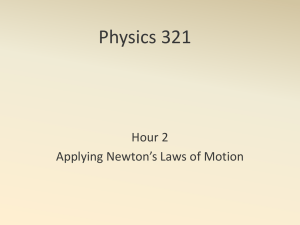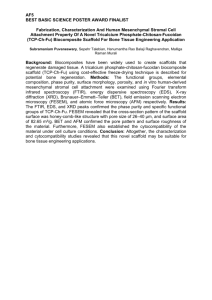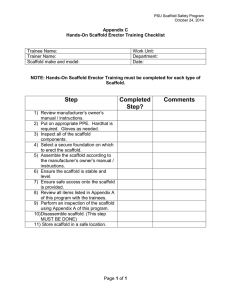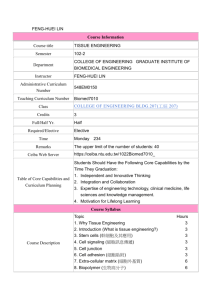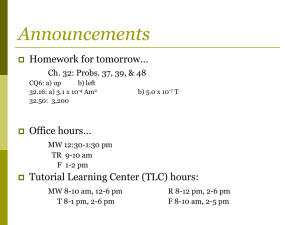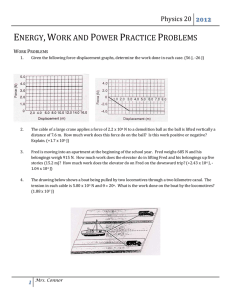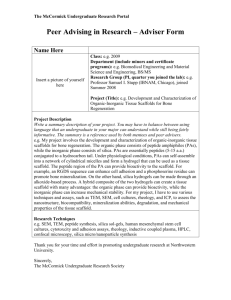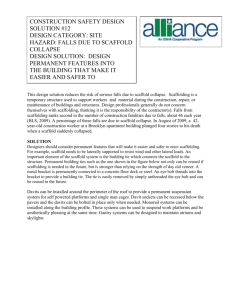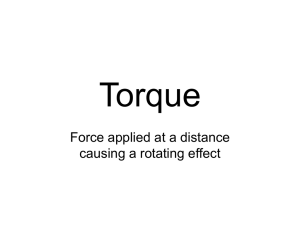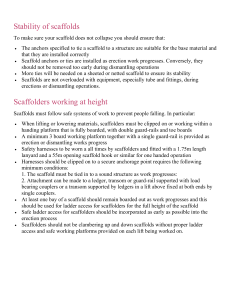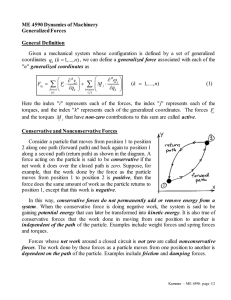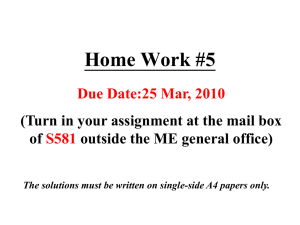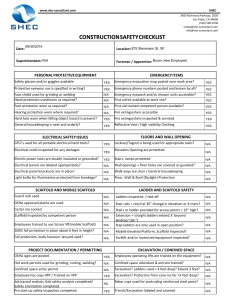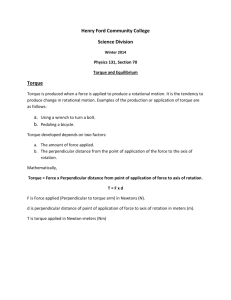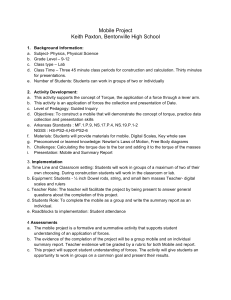Section 6.4 Parallel Force Problems - Zamorascience
advertisement
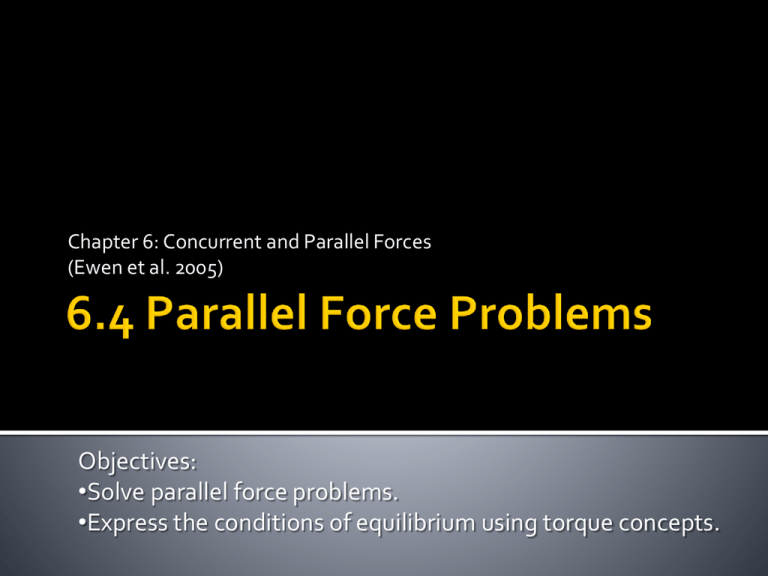
Chapter 6: Concurrent and Parallel Forces (Ewen et al. 2005) Objectives: •Solve parallel force problems. •Express the conditions of equilibrium using torque concepts. The sum of all parallel forces on a body must be zero. F 0 A sign of weight 1500 lb is supported by two cables. If one cable has a tension of 600 lb, what is the tension in the other cable? The sum of all torques must be zero. 0 The person standing on the scaffold (6.0 ft long) from the first slide weigh 150 lb and is standing 2.0 ft from one end. How much weight must each end of the scaffold support? 6.0 ft 2.0 ft Fg = 150 lb F1 = ? F2= ? 1. 2. 3. 4. 5. 6. Sketch the problem. Write and equation setting the sum of all forces equal to zero. Choose a point of rotation at located at any one of the forces. (This eliminates one of the torques.) Write an equation setting the sum of all torques equal to zero. Solve this equation for an unknown quantity. Substitute this quantity into the force equation from step 2 to find the other unknown quantity. A bricklayer weighing 175 lb stands on an 8.00 ft scaffold 3.00 ft from one end. He has a pile of bricks, which weighs 40.0 lb, 3.00 ft from the other end. How much weight must each end support?
